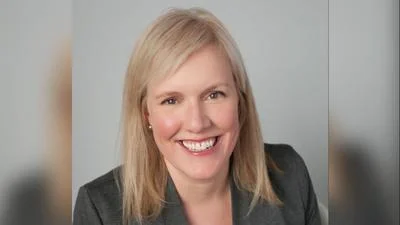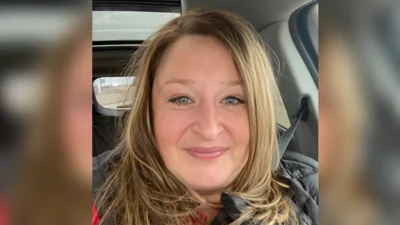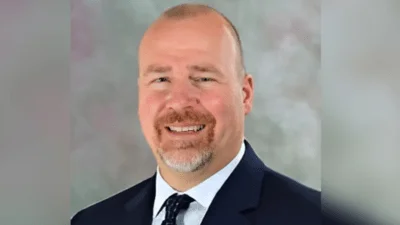The publication is reproduced in full below:
Suicide Prevention
Mr. REED. Mr. President, I would like to talk today about a health epidemic that is claiming the lives of tens of thousands of Americans each year. I am speaking about the epidemic of suicide.
I will talk more about this in detail in a moment, but if there is one thing I would like those listening to my remarks to remember is the number 9-8-8--9-8-8, because 9-8-8 is a three-digit number for the National Suicide Prevention Lifeline.
If you need help, please dial 9-8-8.
Over the last several years, we have all observed the increasing mental health needs in our country. Indeed, the isolation of the COVID-
19 pandemic made those needs more pronounced, particularly among children, adolescents, and young adults.
In October 2021, the American Academy of Pediatrics, the American Academy of Child and Adolescent Psychiatry, and the Children's Hospital Association--organizations representing experts in children's mental health--declared a national emergency in child and adolescent mental health. According to these organizations, ``Rates of childhood mental health concerns and suicide rose steadily between 2010 and 2020 and by 2018 suicide was the second leading cause of death for youth ages 10-
24. The pandemic has intensified this crisis: across the country we have witnessed dramatic increases in Emergency Department visits for all mental health emergencies including suspected suicide attempts.''
According to the National Alliance on Mental Illness, nearly 20 percent of high school students report serious thoughts of suicide, and about 9 percent have tried to take their own lives.
During the pandemic, children faced challenges we couldn't have imagined just a few years ago. Children isolated from their friends and family members to limit the spread of COVID-19. But this meant that many children were separated from loved ones and other trusted adults like teachers who can help keep kids safe. And kids were isolated from their peers, impeding social learning and development. And in these tough times, rates of domestic violence and child abuse tend to increase. On top of all these challenges, more than 140,000 children in the United States lost a caregiver to COVID-19. And it is no wonder that so many of our children and young adults are in crisis.
These hardships are not unique to young people. Adults are feeling them as well. Regrettably, suicide remains the leading cause of death in the United States. In 2020, suicide claimed the lives of 45,979 Americans, according to the latest data from the CDC. This is about one death every 11 minutes. More people died by suicide in 2020 than in motor vehicle accidents. The number of people who think about or attempt suicide is even higher. In 2020, an estimated 12.2 million American adults seriously thought about suicide, 3.2 million planned a suicide attempt, and 1.2 million attempted suicide.
Now, there are no easy solutions, but there are things we can do to prevent suicide and improve access to mental health treatment. And we have made some progress. Almost two decades ago, we passed legislation to ensure parity in insurance coverage for mental and behavioral health. We have more work to do to enforce the law, but it was an important first step. And one of the most significant investments we have made in mental healthcare was in passing the Affordable Care Act. We expanded health insurance coverage for millions of Americans and made sure that coverage included mental and behavioral care, which was often excluded from health insurance before the ACA.
We need to do more though. More and more people need mental and behavioral healthcare and do not have the resources to get such care. And those with the resources find that there aren't enough providers to see them, even with good healthcare insurance. There simply aren't enough clinicians for the need. And lastly, we need to better help people in crisis. We can't get people into effective care for the long term if we haven't stopped the immediate crisis. That is why suicidal prevention efforts are so critical.
As I alluded to earlier, last weekend, the National Suicide Prevention Lifeline made the switch from its longstanding 10-digit number to an easy-to-remember 3-digit number, 9-8-8.
In 2019, I joined my colleagues Senators Tammy Baldwin and Jerry Moran and former Senator Cory Gardner in introducing legislation requiring this switch. Our bill was signed into law the next year, and we have been working since then to make sure that 9-8-8 has the funding to be able to handle the influx of new callers. It is estimated that the Lifeline will receive millions more calls with the new number, so we need trained people on the other end of the line ready to get people the help that they need.
When we started this effort, the Lifeline only received about $7 million in Federal funding each year. Last year, with the help of President Biden, Chair Murray and Chairman Leahy, we were able to secure nearly $300 million for the Lifeline, and we are working to get the number up to $700 million next year. This level of funding will help ensure that calls are answered quickly and locally so that people calling can talk to someone from their State who will know exactly where to find nearby resources. We are also working toward a system in which mobile response teams can respond in real time and be deployed to help people in crisis who call.
While the switch to 9-8-8 over the weekend was a huge step forward, we are just beginning to build a much broader system to help people in crisis across the country. I introduced the National Suicide Prevention Lifeline Improvement Act with Senator Moran last year to help move the Lifeline toward a more comprehensive system. The Health, Education, Labor, and Pensions Committee passed this bipartisan bill unanimously almost a year ago. It is time for the full Senate to take it up and pass it.
Senator Moran, I must point out, has been a true leader in these efforts. Recently, we have teamed up in introducing the Suicide Prevention Act to try and intervene with those who may be in crisis but may not know to call 9-8-8 or reach out otherwise. The Suicide Prevention Act would fund prevention programs in hospital emergency departments to better screen for suicide or mental health crises. This is important because over 90 percent of people who attempt suicide have seen a healthcare provider--often a visit to a hospital, particularly an emergency room--in the weeks and days prior to their attempt. As these people are accessing the healthcare system, the mental health issues that really are driving them to seek medical attention are often overlooked. There are evidence-based strategies that healthcare professionals can employ to intervene before it is too late, but they need the training and the resources in order to do so. The bill would also strengthen data collection on suicide so we can better direct resources where they are needed most.
We also need to respond to the challenges facing young people. Back in 2004, I joined my former colleague Senator Gordon Smith in introducing the Garrett Lee Smith Memorial Act, which was named for his son Garrett, who tragically lost his life to suicide the day before his 22nd birthday. This tragedy drove home the realization that suicide and mental health crises are so common among young people.
Our legislation authorized new funding for youth suicide prevention programs in States and on college campuses. Since it was first enacted, the Garrett Lee Smith Memorial Act has delivered roughly $750 million in suicide prevention funding nationally. And I am pleased that Senator Lisa Murkowski, another longstanding partner and champion on this issue, joined me in introducing the reauthorization of this law so we can continue funding programs to support youth and young adults.
Mental health and suicide have for too long been subjects that have been difficult to talk about, much less confront. In meeting the challenge of this mental health crisis, we must be relentless. We cannot just do one thing or even a few things because there is no single solution.
A few days ago, President Biden signed the Bipartisan Safer Communities Act, which included new resources for mental healthcare, including an additional $150 million for implementation of 9-8-8 and billions of dollars for other mental health services such as the nationwide expansion of the Certified Community Behavioral Health Clinic model. But that cannot be the end of our work.
Each of the efforts and bills I have mentioned represent our continuing and unfinished work. They would add another layer to help prevent suicide and strengthen our mental healthcare system.
So I urge my colleagues to work with me and my colleagues like Senator Moran and Senator Murkowski to pass the Suicide Prevention Act, the National Suicide Prevention Lifeline Improvement Act, the Garrett Lee Smith Memorial Act reauthorization, and to undertake many other efforts spearheaded by my colleagues. We should move forward with these measures without delay to prevent another 45,000 Americans from falling victim to suicide.
I yield the floor.
I suggest the absence of a quorum.
The PRESIDING OFFICER. The clerk will call the roll.
The legislative clerk proceeded to call the roll.
Ms. CANTWELL. Mr. President, I ask unanimous consent that the order for the quorum call be rescinded.
The PRESIDING OFFICER. Without objection, it is so ordered.
SOURCE: Congressional Record Vol. 168, No. 119
The Congressional Record is a unique source of public documentation. It started in 1873, documenting nearly all the major and minor policies being discussed and debated.
Senators' salaries are historically higher than the median US income.



 Alerts Sign-up
Alerts Sign-up